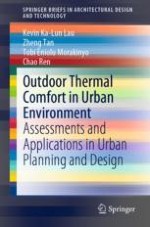
2022 | OriginalPaper | Chapter
1. Characteristics of Thermal Comfort in Outdoor Environments
Authors : Kevin Ka-Lun Lau, Zheng Tan, Tobi Eniolu Morakinyo, Chao Ren
Published in: Outdoor Thermal Comfort in Urban Environment
Publisher: Springer Singapore
Activate our intelligent search to find suitable subject content or patents.
Select sections of text to find matching patents with Artificial Intelligence. powered by
Select sections of text to find additional relevant content using AI-assisted search. powered by